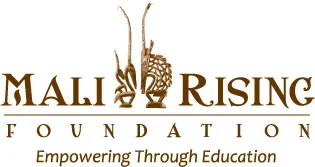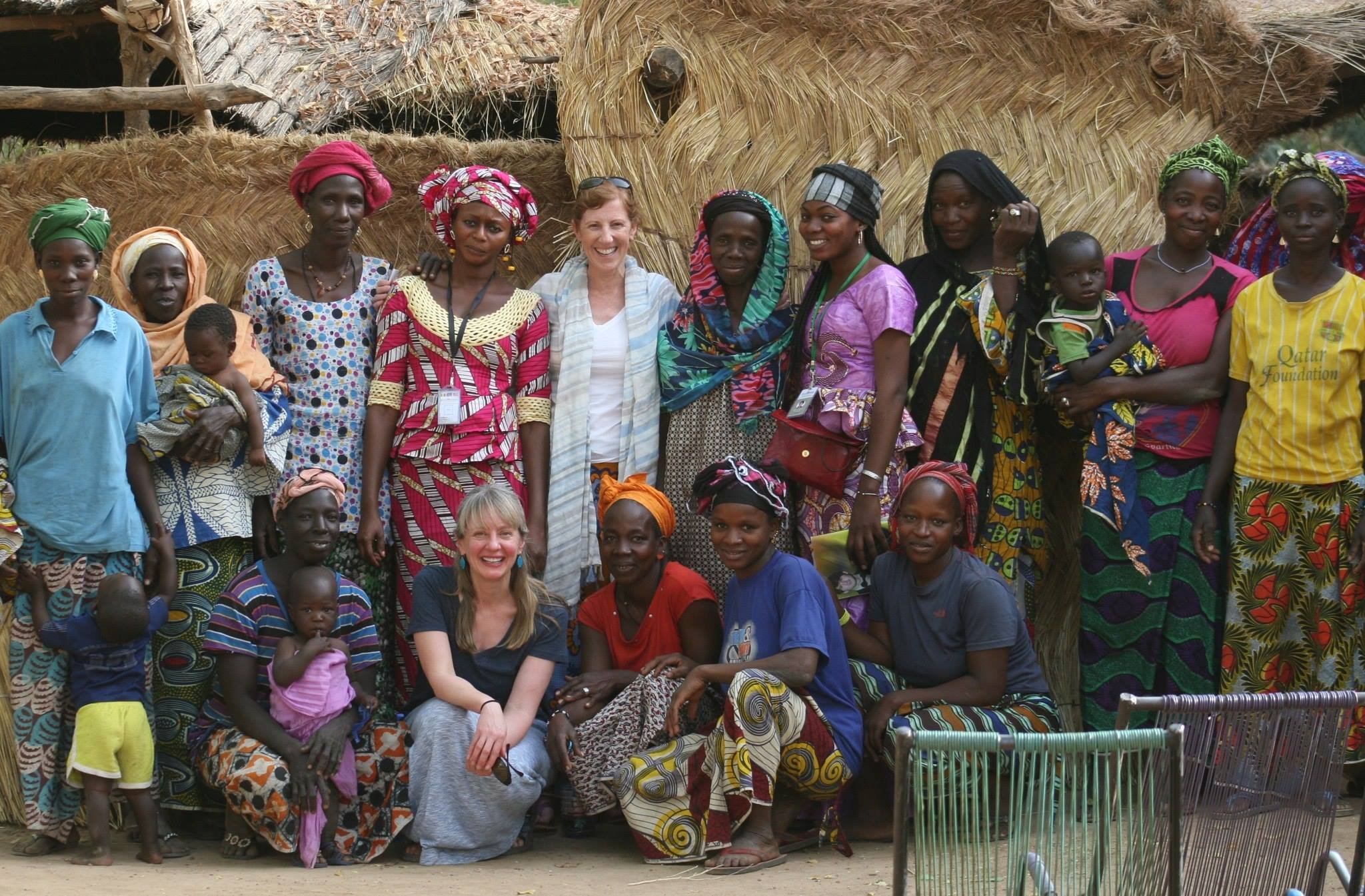How do Malian students celebrate the end of the school year? How about jumping in a river?
Friday Fun Facts About Mali
By Merritt Frey, Executive Director
I recently had my 7 year anniversary as the Executive Director of Mali Rising…it is hard to believe! The anniversary has me thinking about how much I’ve learned over those years and how much I’ve grown to respect the people of Mali and love the culture of the country. On this cold Friday morning when I feel so far away from the warmth of the climate and people, I thought I’d share a few fun Mali facts to help you know the country a little better too.
This great picture is the perfect reminder of my first trip to Mali in 2016. This is the women of Simidji - home to Mali Rising’s Sue Chung Chui Middle School, Mali Rising staff member Hindaty, board member Jill, and me (bottom left/center).
FACT #1
Mali’s name comes from the Bambara word for hippopotamus, which can be found in the Niger River that winds its way through the country. As a side note, the name of Mali’s capital, Bamako, comes from the Bambara word meaning "place of crocodiles" or in some interpretations “the tail of the crocodile.”
FACT #2
Although today Mali is one of the poorest countries in the world, it used to be one of the very richest. Its great wealth was built on trading of salt and gold and the country was a center of scholarship and learning. (https://www.worldatlas.com/articles/10-interesting-facts-about-mali.html)
FACT #3
The prime meridian passes through the city of Gao in Mali. This means you can stand with one foot in each hemisphere if you visit Gao! (https://www.onhisowntrip.com/most-interesting-facts-about-mali/)
FACT #4
Mali achieved independence from France (which colonized much of West Africa) in 1960. This makes Mali quite a new democracy, and the legacy of colonization continues to cause issues today.
FACT #5
Mali’s economy is largely based on agriculture, with cotton being the primary export crop. Approximately 80% of the population is involved in farming or fishing as their main livelihood. Gold mining also contributes a significant amount to the country’s exports. Together, gold and cotton make up approximately 80% of the country’s exports. (http://justfunfacts.com/interesting-facts-about-mali/ and https://www.economy.com/mali/indicators).
Every country and every place has a complicated history and context. It has been a pleasure to have the chance to learn a little bit about Mali each year and to have my understanding of the place and people grow at the same time. It is such a good reminder to always be curious about how we are all the same and how we are all different!
Inspired by what you’ve read? Donate to Mali Rising to be part of keeping this work going!
The News From Mali
History & Culture of One Mali Ethnic Group: the Soninké
In Mali, your ethnic group is a point of pride and connection. In our schools, we see students from a wide range of ethnic groups learning side-by-side – embracing their own history and culture while also enjoying the diversity of Mali. Today, I want to share the history of my ethnic group and a little of its culture, because I come from a very large Soninké family from Mali in the Kayes region.
A Child Should Be In School; Not In A Mine
In recent decades in Mali, the increasing rate of global warming has caused continuous climatic change characterized by drastic reduction in rainfall. Before, farming was the dominant way to make a living but this unexpected situation (poor rainfall) has hugely impacted on rural farmers’ incomes. Uncertainties, famine and extreme poverty have reached many families in southern Mali. Some people have lost hope. In order to deal with drought issue and meet their household’s needs, many local farmers migrate to the artisanal gold mines. Artisanal mining has become an alternative way of survival strategies for local farmers. Some parents encourage their children to give up schools and join them in mine and work in order to contribute to household finances
Remembering Mali Independence Day
How Aminata Spends Her Summer Vacation
Online Book Discussion: The Moment of Lift
We want to talk with YOU about big ideas for changing the world. Some of our supporters were really inspired by Melinda Gates' book, The Moment of Lift: How Empowering Women Changes the World. We decided it would be fun to have a book group-like discussion and connect some of the themes from the book with Mali Rising's work and your support. Please join us!
When Mud Stands Between You & Your Education
When it rains, it pours. This old saying is especially true in Mali, and it presents a special challenge to children walking to school. It is common for many kids in rural areas in Mali to walk several miles to school and some children may walk four to five miles each way. The time and energy required each day is one of the most common reasons students drop out of school, especially when it comes to girls. This is why building schools is a core part of our education work — by bringing the school closer to the kids, we can make a big difference! This is never more true than during the rainy season. In the picture below, you see the road to one of the Mali Rising partner villages, Nieguekoro, which is home to Ross and Marilou Moser Middle School. This scene is typical during the rainy season.
Do You Miss International Travel? Boy, I Do.
In preparation for our May 13 Get to Know Mali Volunteer Evening, I’ve been digging around into information about Mali that might be of interest to those of us in North America or Europe. As a side-effect of that research, I’m positively itching to be able to travel again and missing the sights, sounds, and smells of Mali! I figured some of you might be laboring under the same problem so thought I would share a snippet here about 5 places in Mali I wish I was exploring today:



